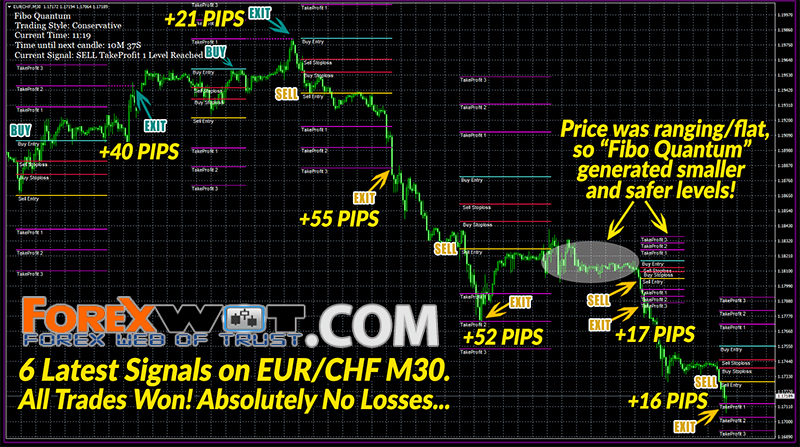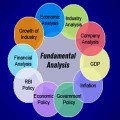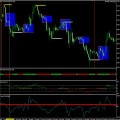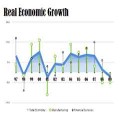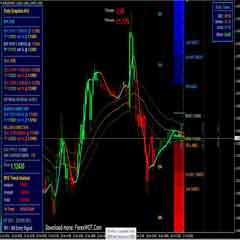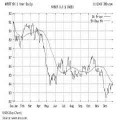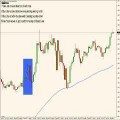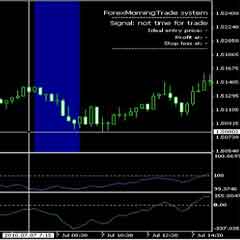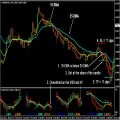The Role of Inflation – Inflation is in many ways the elusive enemy of central banks throughout the world. Much progress has been made over the decades. In the period of 1973 through 1987, inflation levels in industrialized countries were near the 7.5 percent range. A decade later, in 1989, inflation levels ranged at the much lower level of 3 percent.

Today, all you have to do is read the central banks’ public documents to realize that their major mission is to contain inflation. Many central banks, in fact, announce inflation targets. In fact, Bernard Bernanke, the successor to Alan Greenspan, has favored formal inflation targeting for the U.S. Federal Reserve, and this is a significant change from Greenspan’s famous verbal ambiguity in his communications strategy.
Central banks around the world monitor inflation and raise interest rates to try to slow down inflation. Central banks often include in their statements accompanying interest rate decisions that they will be vigilant over potential risks of inflation. This is commonly known as being an inflation “hawk.” Whenever inflation is feared to be lingering in the economy, traders interpret this fear as raising the probability that interest rates will increase.
- Importance Article: Forex Trading Strategy – WHY FUNDAMENTALS ARE IMPORTANT
A fear of lingering inflation tends to generate in the market the anticipation of higher rates, and therefore works to support the buying of a currency. That is also why strong retail prices tend to undermine bond prices. Bondholders fear increased rates because they reduce the attractiveness of the bonds they hold, and the market lowers the prices of the bonds in order to equalize the yield of the old bonds with the new interest rates.
Inflation is the ever-present yet stealthy ghost that spooks the forex market and challenges central banks. It is particularly difficult to track. There is ongoing controversy even among the best economists on how to measure and detect inflation, and as a result there are many data sets relating to inflation.
Central banks all over the world are trying to get an accurate answer to the question of what is true core inflation? This level of complexity in measuring inflation sets up the forex market for surprises when data comes along that inflation has not been contained.
If central banks can’t be accurate in measuring inflation, why should an individual trader? Surprises can be expected. For example, in December 2006, when inflation data rose the highest in 30 years, it provided a boost in the dollar value as more traders were betting that the Fed would not decrease rates, or might even increase rates.
Speaking of the challenge in interpreting monthly inflation numbers during his tenure on the Federal Reserve Board, former vice chairman Alan Blinder said, “The name of the game then was distinguishing the signal from the noise, which was often difficult. The key question on my mind was typically: What part of each month’s observation on inflation is durable and what part is fleeting?” (Commentary on “Measuring Short-Run Inflation for Central Bankers,” Federal Reserve Bank of St. Louis Review, May/June 1997).
The challenge to getting a true measure of inflation has also been a focus of recent activity in Britain. The Office of National Statistics is introducing a new inflation calculator that allows persons to calculate their own inflation measure! In other words, the other measures [such as the Retail Price Index (RPI), the Retail Price Index excluding Mortgage Payments (RPIX), and the Harmonized Index of Consumer Prices (HCIP)] are still in force, but there is recognition that inflation needs more measures for an accurate assessment.
This confusion and debate over how to detect inflation in Great Britain underscores the issue is an international one. The Monetary Policy Committee of the Bank of England ( www.parliament.the-stationery-office.co.uk/pa/ld199899/ldselect/ldmon/96/9615.htm) offers more details on this subject.
The good news is that the forex trader doesn’t have to become a Ph.D in economics to follow inflation data. There are many key measures of inflation that are tracked. But you have to check the central bank web sites.
Find Out the Target Inflation Rates of Central BanksTraders need to keep track of inflation rates and targets in each country. The best way to do this is to first check the web site of the central bank. They contain a great deal of information on inflation and inflation policy.
The Federal Reserve Bank of the United States measures inflation using something called the Core Personal Consumption Expenditure Index, or Core PCE Index. Core inflation refers to the components of inflation that are more durable and not a result of temporary events, such as a hurricane. Core inflation excludes food and energy prices, which vary temporarily.
The PCE is now the favorite measure used by the Federal Reserve. However, in an attempt to be even more accurate, economists have gone further and developed a trimmed PCE, which is designed to give a truer view of inflation.

Table above ( 12-month PCE Inflation ) shows three measures of PCE, but what is really important is to realize that any rate above 2 percent is considered to be a signal of too much inflation in the economy by most central banks, and these kind of levels lead to expectations of central banks’ increasing interest rates or at least not decreasing rates.
The Producer Price Index (PPI) is another key measure that is reported and tracked. The PPI measures what businesses charge one another for everything from iron ore and diesel fuel to cases of soda pop. The U.S. Bureau of Labor Statistics generates PPI data for over 8000 different product categories, reflecting price pressures among different industries. A net PPI figure, of course, is more general in nature (www.bls.gov/).
In November 2006, the PPI surprisingly rose 2 percent higher than the month before. The index had not risen by that much in a single month in more than 32 years, since the energy and stagflation crises of the mid-1970s. The fact that the PPI and the core inflation may differ adds to the uncertainty of the true condition of the economy regarding inflation.
The Consumer Price Index (CPI) tracks consumer price changes given a fixed basket of goods and is part of the data set watched by traders in all countries. The U.S. Bureau of Labor Statistics provides comprehensive data on inflation and, in fact, tracks the various inflation rates.
It conducts extensive sampling of 87 urban areas, 50,000 homes, and 23,000 retail establishments. Persons interested in getting deeper into their methodology for generating inflation data will be rewarded by going to the Bureau of Labor Statistics’ web site. From time to time, the CPI basket changes to more accurately reflect new items available in the economy. The problem with CPI is that it doesn’t reflect housing prices and therefore may underreport inflationary pressures.
Tracking gold, the Commodity Research Bureau, and other commodity indexes and patterns will also help you get a handle on inflation. The main point here is that the forex trader needs to pay serious attention to inflation rates and expectations of inflation rates, because they are a key to discerning what the central banks fear, and a clue to whether they will raise interest rates.
Find the Latest CPI per Country and Compare It against Their Target Rate.
Which Countries Have Inflation above the Target Rate?
Take the indicators or economic data releases coming out and group them. Which are leading?
Which are lagging? Which are coincident?
Which countries have inflation rates over 2 percent?
Which country has a central bank policy to increase inflation?

